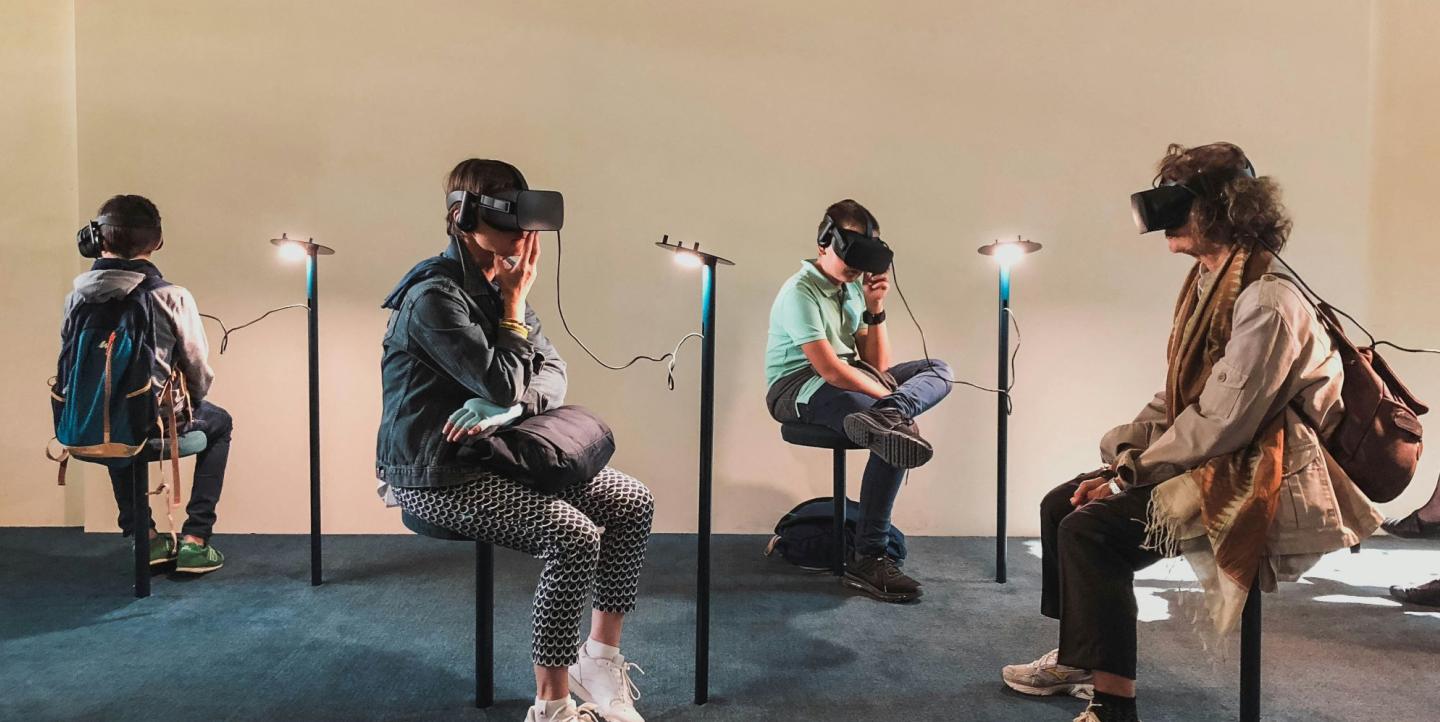Imagine stepping into a bustling refugee camp in Syria, the sounds of conversations and the sight of makeshift tents surrounding you, or in a historic protest, feeling the energy and tension in the air. Thanks to virtual reality (VR) technology, such immersive experiences are becoming possible.
VR – a computer-generated immersive and interactive environment – promises viewers the opportunity to experience the news in a profoundly engaging manner, by placing them within the scene of stories ranging from political events to cultural narratives and environmental issues.
News organizations globally are adopting VR, offering a new dimension to news reporting as the technology becomes more affordable and available.
“Most news organizations have embraced VR in the newsroom, with the availability of affordable 360 cameras lowering the barrier to entry,” reads a report from the BBC. “Cheaper alternatives to 360 cameras, such as using smartphones or web browsers to create a 360 video, is further improving affordability.”
As use of VR grows, here’s what journalists should know about the technology, its capacity to create new avenues for storytelling in journalism, and more:
Enhancing storytelling
One of the key advantages of VR in journalism is its ability to create immersive experiences for viewers to convey the full sensory and emotional impact of a story, said Hadeel Arja co-founder of Frontline in Focus, which uses VR to report on war zones and other hard-to-reach areas.
“Virtual reality is a powerful tool that adds interactive elements to our stories, immersing the audience in the middle of the event and allowing them to experience the story from all angles,” said Arja. It’s particularly useful for covering conflict and crises, she continued: “Conflict coverage should go beyond breaking news and major events like earthquakes or massacres. By using VR, we can shed light on daily life and stories from areas like Syria, Libya and Ukraine.”
Journalists are already leveraging this technology to bring stories to life. For instance, BBC's VR documentary, "We Wait," places viewers on a lifeboat with refugees crossing the Mediterranean Sea, offering a visceral view of their harrowing journey. Similarly, Frontline in Focus’ “This is My Home” VR project allows viewers to witness how a ruined school in Syria was turned into a refugee shelter. It combines the VR tour with narration from a young man who lives in the shelter.
VR engagement can also help foster empathy and raise awareness in ways that traditional reporting might not. For example, the Guardian's VR experience, "6x9," places viewers inside a solitary confinement cell, highlighting the psychological effects of isolation.
Ethical considerations
While the potential of VR in journalism is vast, it is not without challenges. Ensuring the accuracy of content is paramount, as the immersive nature of the medium can make any misinformation particularly impactful.
Ethical considerations should also take into account the potential effects on the audience, Arja said: “VR can immerse viewers deeply in the story, potentially affecting them emotionally and psychologically. Ethical VR journalism should consider how the immersive experience impacts viewers and ensure content does not cause harm.”
Consider, too, the effects on people who can be viewed in VR. “Journalists using VR should respect the privacy of individuals depicted in VR scenes, they should avoid revealing sensitive personal information without consent,” said Arja.
She emphasized the need for journalists to communicate directly to their audiences how they use VR: “Being transparent about the use of VR technology, how scenes are constructed, and any enhancements made to the environment is crucial for maintaining trust with the audience.”
Accessibility
Though improving, the cost and accessibility of VR technology remains a barrier. High-quality VR production requires significant investment in equipment and expertise, which may be beyond the reach of smaller news organizations or journalists in the Global South, who contend with steep internet prices and unreliable internet connections, and have trouble covering the cost of 3D cameras.
“VR is not muchly accessible to Zimbabwean journalists because we do not have much knowledge on it. Although I have used it in some of my exhibitions, most people do not really know much about VR,” said Munashe Chokodza, a Zimbabwean photojournalist. “In Zimbabwe VR is adopted to a lesser extent because of the limited access to network connections and high cost of data due to economical challenges.”
Despite these barriers, Arja believes VR’s usage will increase over time. “I always say that when VR tools, like headsets and 360-degree cameras, become smaller and more affordable, their usage will increase,” she said. “The youngest generation is already familiar with these technologies, and if we want to reach them, we need to use the tools they are using.”
The future of VR in journalism
In countries where VR is still a new or little known technology, introducing it to audiences is the first step.
“News organizations in Zimbabwe and other developing countries that are not using VR should start with promoting exhibitions of multimedia journalists who use VR. This will help them embrace the technology, and once VR takes off, people will start to believe in it,” said Chokodza.
As VR technology continues to evolve and become more accessible, it could potentially revolutionize how news is reported and consumed, fostering a more informed and empathetic global audience. Advances in VR, such as high-fidelity displays and AI integration, promise to further enhance the realism and interactivity of VR experiences.
“Investing in this technology is amazing because producing this type of story creates a special experience for the audience, leading to interaction, impact and action. These are the core purposes of journalism: to create an impact and prompt action,” said Arja.
Photo by Lucrezia Carnelos on Unsplash.


